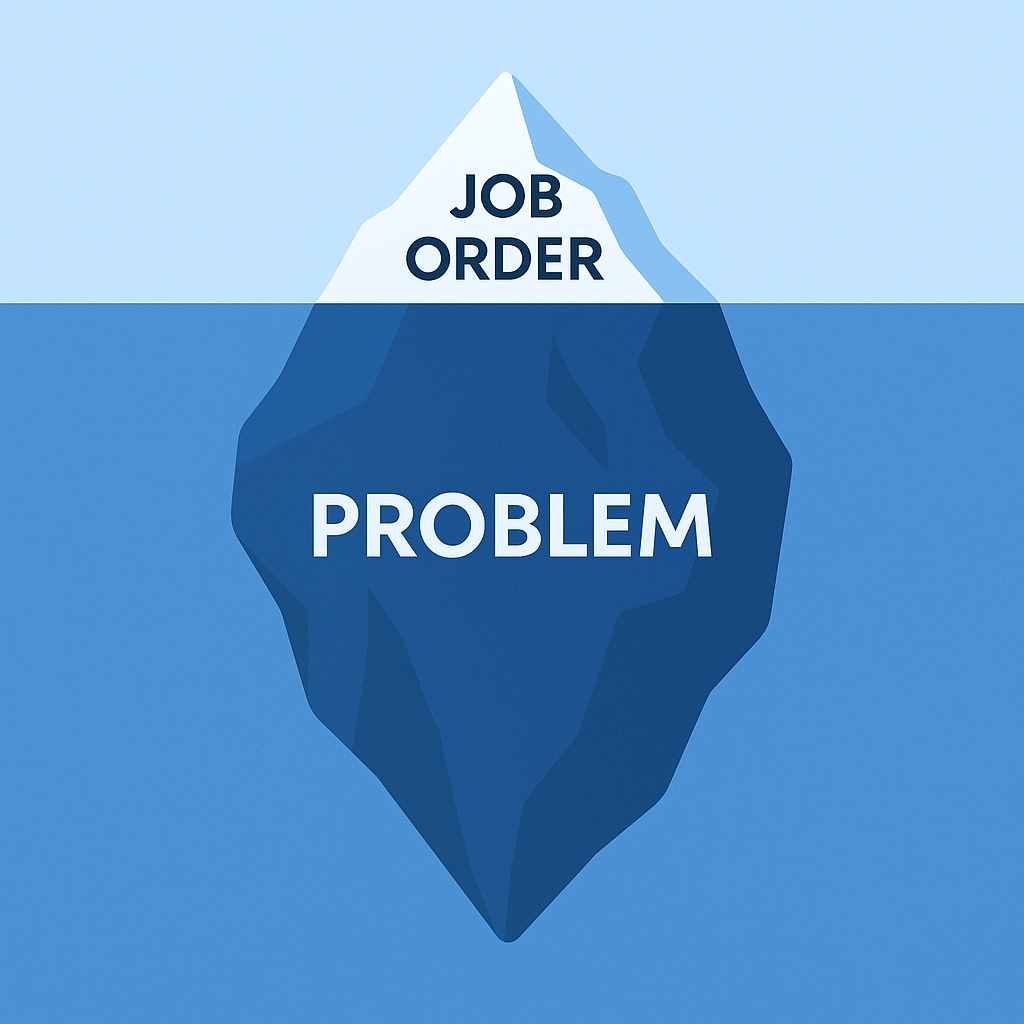Selling With Your Consultant
In my previous post, How to Prevent Unexpected Contract Terminations, I shared how systemizing consultant and client check-ins at key milestones...

Poor sales onboarding is a recipe for an expensive disaster. As I have posted in the past, market leading organizations treat sales onboarding as a continuous revenue generating activity, no different than sales prospecting. They’ve made sales onboarding an internal core competency because they know it gives them a competitive advantage. When you look at the data, it is easy to understand why.

CSO Insights found that effective sales onboarding programs can boost quota achievement by 14%. The study goes on to report that companies lose revenue when new reps are not equipped with the sales training and tools to effectively position, qualify, and sell company value.
Having said that, I share with you some of the common sales onboarding mistakes including Six Indicators Your Sales Onboarding is Broken. Review each indicator and ask yourself which is true within your organization so that you can take action to fix things before your organization becomes another statistic. This way, you will be sure to retain all those sales reps (and recruiters) you worked so hard to hire.
If you're short on time and want to just jump ahead to the solution, check out our ebook, How to Make Successful Sales Onboarding Repeatable, Scalable and Predictable.
The Majority of Your Sales Turnover Occurs in the First Six months
If this describes your organization, then what is likely happening is your new hires like your company and they like the people. Most importantly they don’t mind their job and doing the work. However, they’re not ramping up fast enough which means they’re not having success. No success means they’re not making money. When this happens salespeople get frustrated and lose their confidence. And make no mistake, self-confidence (and for most, making money) is EVERYTHING for salespeople. When this happens they lose faith in the opportunity and working for your company. So they move on. Yes, it is one hell of a domino effect! Continue reading to learn more on how to resolve this.
Slow New Hire Ramp-up, Time to Quota Attainment
If it is taking your sales new hires six months or longer before the numbers show they are tracking to hit quota, it is taking too long. Granted your quotas could be unrealistic or you could be tracking and measuring the wrong metrics. Just as importantly, if you are not seeing improvement through accelerated time to quota attainment from sales new hire to sales new hire over time, then you have a sales onboarding problem.
There will always be a ramp-up, but a great sales onboarding program can cut ramp-up time in half and significantly reduce your turnover costs. At a minimum, with each new sales rep you hire you should experience a quicker ramp-up time.
Average Call Duration
You’re tracking and measuring average call duration (call time) right? If you're not then you need to start. If your reps are averaging 2:00 of call time per connect or less then you know you have a sales training issue. Your sales onboarding program is lacking skills training, knowledge training or both. You read the statistic from Forrester that said only 19% of 400 US-based IT buyers surveyed believe that their time spent with salespeople is valuable and lives up to their expectations. Buyers don’t want to hear a sales pitch and colleges are not teaching kids business acumen which means you need to. If your sales reps can’t keep prospects on the phone and average call duration is not consistently increasing week by week then you need better sales training!
Haphazard Onboarding
If your sales onboarding program doesn’t include a detailed schedule detailing your new hire’s schedule for their first few weeks down to the hour then you have a haphazard onboarding program.
One simple step you can take to fix this is by incorporating milestones into your sales onboarding. For example, your week-one milestone might be “all new sales hires can clearly articulate the company value proposition.” At the end of week one, make each new sales hire deliver a live presentation articulating your company value proposition. Creating the milestone and tasking your sales new hires with delivering the company value proposition makes you (and your new hire) confront the reality of whether or not your sales new hire has “nailed the value proposition.”
New Hire Isolation
I get it, managers are crazy busy running around with their hair on fire. But relegating your new hire to "isolation island" in which they read and learn all day on their own is no way to onboard your new employee. That is like forcing the new kid at school to eat lunch alone! It’s no wonder that a Gallup Group study found that 70% of all salespeople feel disengaged from their work! So be sure to incorporate blended learning into your sales onboarding including Live-Instructor Led Training and online training.
Giving your new hires access to thumb through the onboarding approach and process is O.K. just so long as that is not the entirety of your onboarding process. Also, start your new hires on a Friday, not a Monday and throw a party, do a group lunch (video lunch and virtual parties work just as well). Most importantly, make sure your sales new hires get meaningful face-time with their manager and executive leadership. Get them involved in group activities and exercises to quickly drive engagement. Keep in mind that new sales hires that go through a structured onboarding program are more than 50% likely to stay with the organization after three years, according to The Wynhurst Group.
Someone From Your HR, Operations or Training Department is Teaching Your Reps How to Sell.
Most staffing firms run lean organizations. Heck, many don’t even have a formal HR department and even fewer have a full time trainer or training department. Whoever created your sales training content and is teaching your sales team to sell, you have to ask yourself, what is their sales experience and what is or was their track record of success? Aberdeen reports that 85% of the “Best in Class” companies use a professional sales trainer or curriculum. You will never get the buy-in from your sales reps if your trainer doesn't have the experience and successful track record to back up and support what they teach.
Conclusion
Hopefully by now you have learned how and why market leaders treat sales onboarding as a continuous revenue generating activity, no different than sales prospecting. But the more important question is, how does your sales onboarding stack up? Yes, some of these fixes might take some careful planning and time. But trust me, you will be so happy you did it. Heck, just imagine if you cut your annual turnover by 5% or even 15%? Imagine if you cut new hire sales ramp up time by 25%? Run the numbers and I think you will be amazed by the impact it can have on your organization.

In my previous post, How to Prevent Unexpected Contract Terminations, I shared how systemizing consultant and client check-ins at key milestones...

About a year ago, I was serving as the fractional revenue leader, managing sales and recruiting for a client.

If you’ve worked in staffing long enough, you’ve been trained to chase job orders.